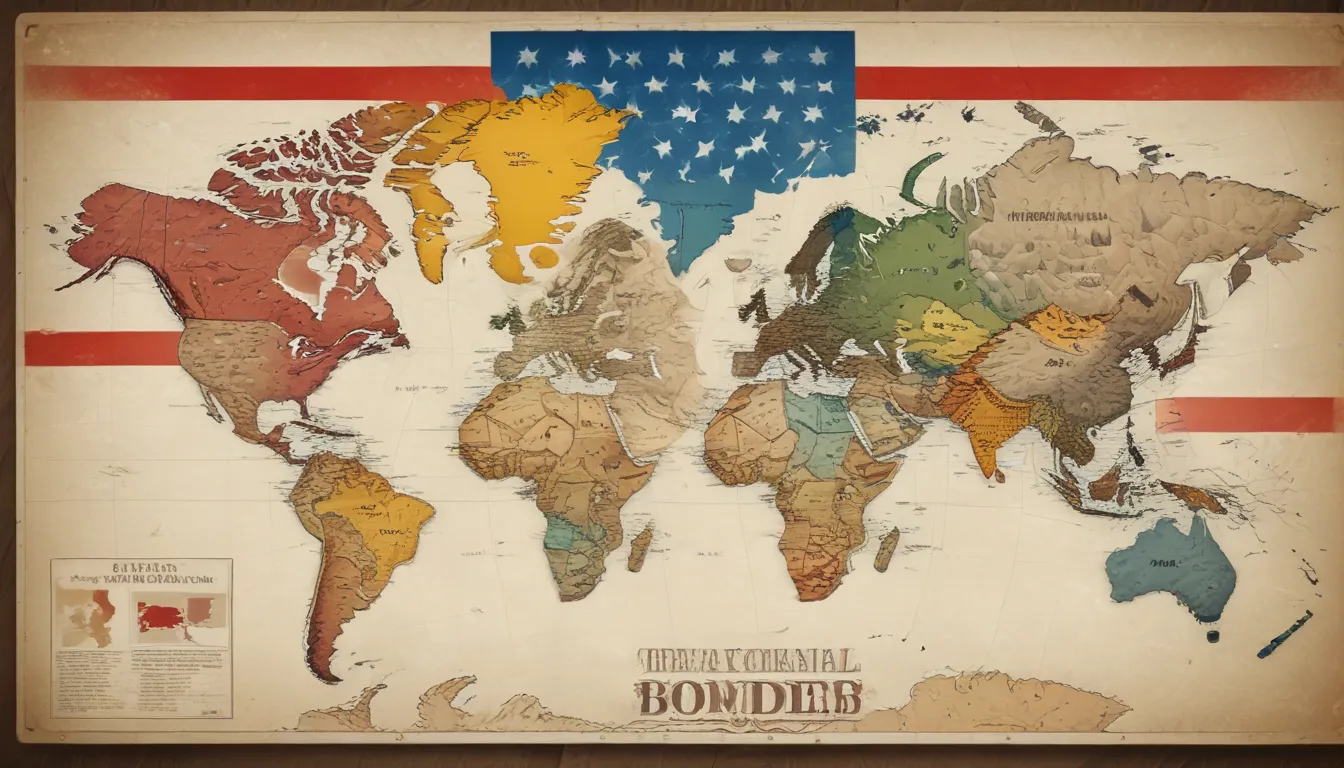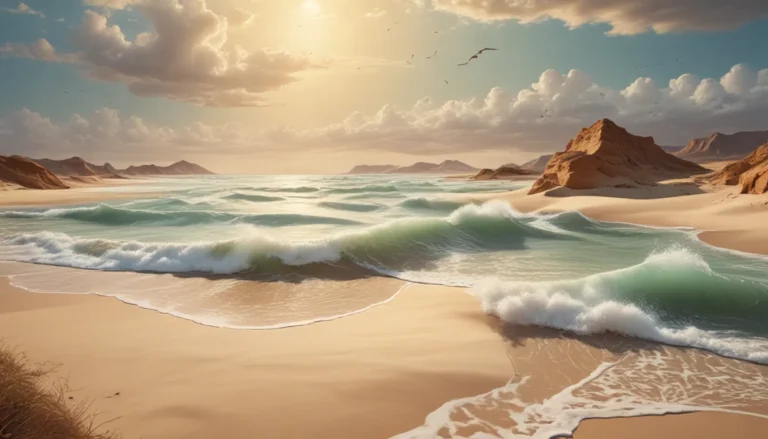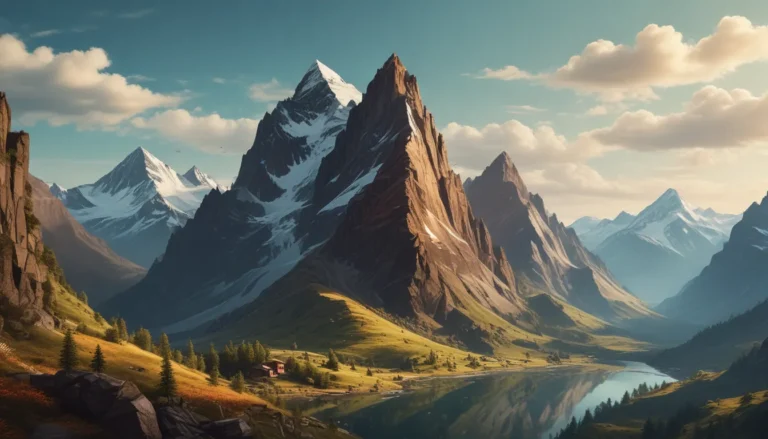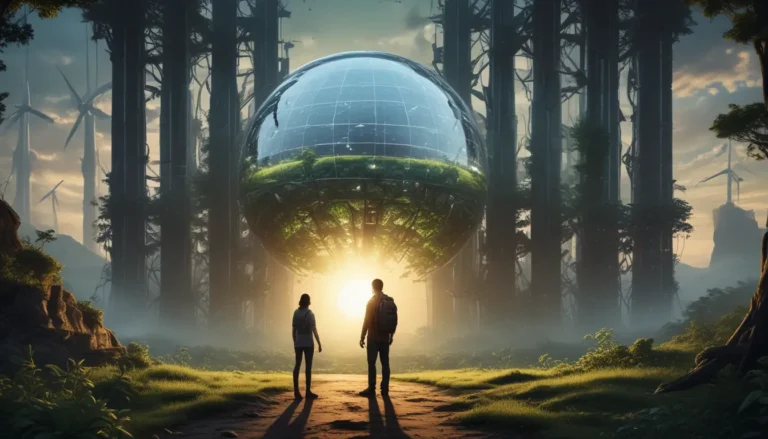A Note About Images: The images used in our articles are for illustration purposes only and may not exactly match the content. They are meant to engage readers, but the text should be relied upon for accurate information.
Political borders play a crucial role in shaping our world, defining territories, and influencing the lives of people everywhere. While they may seem simple on maps, the stories behind these borders are often complex and intriguing. In this article, we will embark on a journey through 17 unbelievable facts about political borders that will leave you amazed. From the longest international border to the absence of physical barriers, these facts shed light on the rich history, unique circumstances, and peculiarities that exist around the world.
Exploring the Diversity of Political Borders
- Borders are more than just lines on a map – they can be long, short, disputed, and even disappear. They shape our world in fascinating and complex ways.
- From time differences to borderless cities, political borders are full of surprises. They show us how interconnected and diverse our global community truly is.
Discovering Remarkable Border Facts
The Longest International Border
The longest international border in the world is between Canada and the United States, spanning an impressive 8,891 kilometers from the Atlantic Ocean to the Pacific Ocean.
The Shortest Borders
On the opposite end of the spectrum, the border between Zambia and Botswana, known as the Kazungula Bridge, is only about 150 meters long.
The Enclave Within an Enclave
Baarle-Hertog, a Belgian village, contains 22 Belgian exclaves within the Netherlands, with one of these Belgian exclaves containing a Dutch exclave, creating a unique and complex scenario.
The Triple Frontier
At the intersection of Brazil, Paraguay, and Argentina lies the Triple Frontier, a hub of cultural exchange and commerce where three countries meet.
The Border Without a Fence
The border between Sweden and Finland, stretching over 800 kilometers, has no visible fence, symbolizing the close relationship and trust between the neighboring countries.
The Disputed Border
The India-Bangladesh border, also known as the Radcliffe Line, is one of the most disputed borders in the world, characterized by ongoing conflicts and disputes.
The Border in Antarctica
Antarctica, governed by the Antarctic Treaty System, is a unique borderless region where no country can claim sovereignty over the land.
The Border Wall
The border wall between the United States and Mexico, spanning over 3,145 kilometers, aims to regulate immigration and enhance border security, sparking debates and controversies.
The Border in Four Places
The Four Corners Monument in the United States marks the only spot where four states meet, allowing visitors to stand in four states at once.
The Border Split by Water
The border between Malaysia and Brunei is split by the Limbang River, creating an interesting geographical feature and natural divider between the two countries.
The Disappearing Borders
With the formation of the European Union and the Schengen Area, many borders between European countries have become almost invisible due to free movement policies.
The Truce Village
Panmunjom, located in the demilitarized zone between North and South Korea, is a symbol of the long-standing conflict between the two nations, serving as a site for diplomatic negotiations.
The Island Split by Border
Cyprus is divided by the Green Line, separating the Republic of Cyprus from the self-declared Turkish Republic of Northern Cyprus.
The Border Influenced by Religion
The border between India and Pakistan, drawn during the partition of British India, based on religious demographics, has had a profound impact on the region’s history and relations.
The Border with Time Difference
The border between China and Afghanistan, running through the Wakhan Corridor, separates the two countries by a time zone difference, highlighting unique geographical and temporal characteristics.
The Border Tunnel
The border between the United States and Mexico is marked not only by a physical wall but also by a network of intricate tunnels used for illegal border crossings.
The Borderless Cities
Cities like Nogales, divided between the United States and Mexico, are essentially borderless, allowing residents to cross the border seamlessly for work, study, or family visits.
Understanding the Significance of Political Borders
These 17 unbelievable facts about political borders unveil the complexities, uniqueness, and impact of borders on our world. They highlight how borders shape societies, cultures, and relationships, showcasing the diversity and interconnectedness of our global community.
Conclusion
Political borders hold significant history and significance beyond mere lines on a map. From changing boundaries to disputed territories, these borders impact people’s lives in profound ways. Exploring the incredible facts about political borders reveals the diversity, complexity, and stories behind these boundaries, fostering a better understanding of international relations, cultural diversity, and geopolitical issues.
FAQs
-
What is a political border?
A political border is a geographical boundary that separates countries, states, or regions, demarcating their territories and defining their sovereignty. -
How are political borders established?
Political borders are established through treaties, legal agreements, historical precedents, conflicts, or wars. -
Can political borders change?
Yes, borders can change over time due to territorial disputes, negotiations, political shifts, or geopolitical events. -
Are all political borders recognized by everyone?
No, some borders may be disputed or not recognized by certain countries or groups, leading to conflicts or tensions. -
Are there borderless regions in the world?
Yes, regions like the EU’s Schengen Area have abolished internal borders for travel and trade. -
What are some examples of unusual borders?
Enclaves, exclaves, and unique geographical features like rivers splitting borders are examples of unusual borders. -
Are borders always visible on the ground?
Not always, as natural landmarks can also serve as border demarcations. -
How do borders affect people’s lives?
Borders impact immigration, trade, cultural interactions, resources, and services. -
Can borders change due to political alliances?
Yes, borders can become more fluid through political alliances promoting integration and cooperation. -
What role do borders play in international politics?
Borders shape relations between states, influence foreign policies, and mark territorial integrity and national identity.
Embracing the Stories Within Borders
The intricate web of political borders worldwide holds tales of history, culture, and diplomacy that shape our past, present, and future. By exploring these unbelievable facts about political borders, we gain a deeper appreciation for the diversity, complexity, and significance of these boundaries. Next time you look at a map, remember the remarkable stories and connections encapsulated within those seemingly simple lines.






